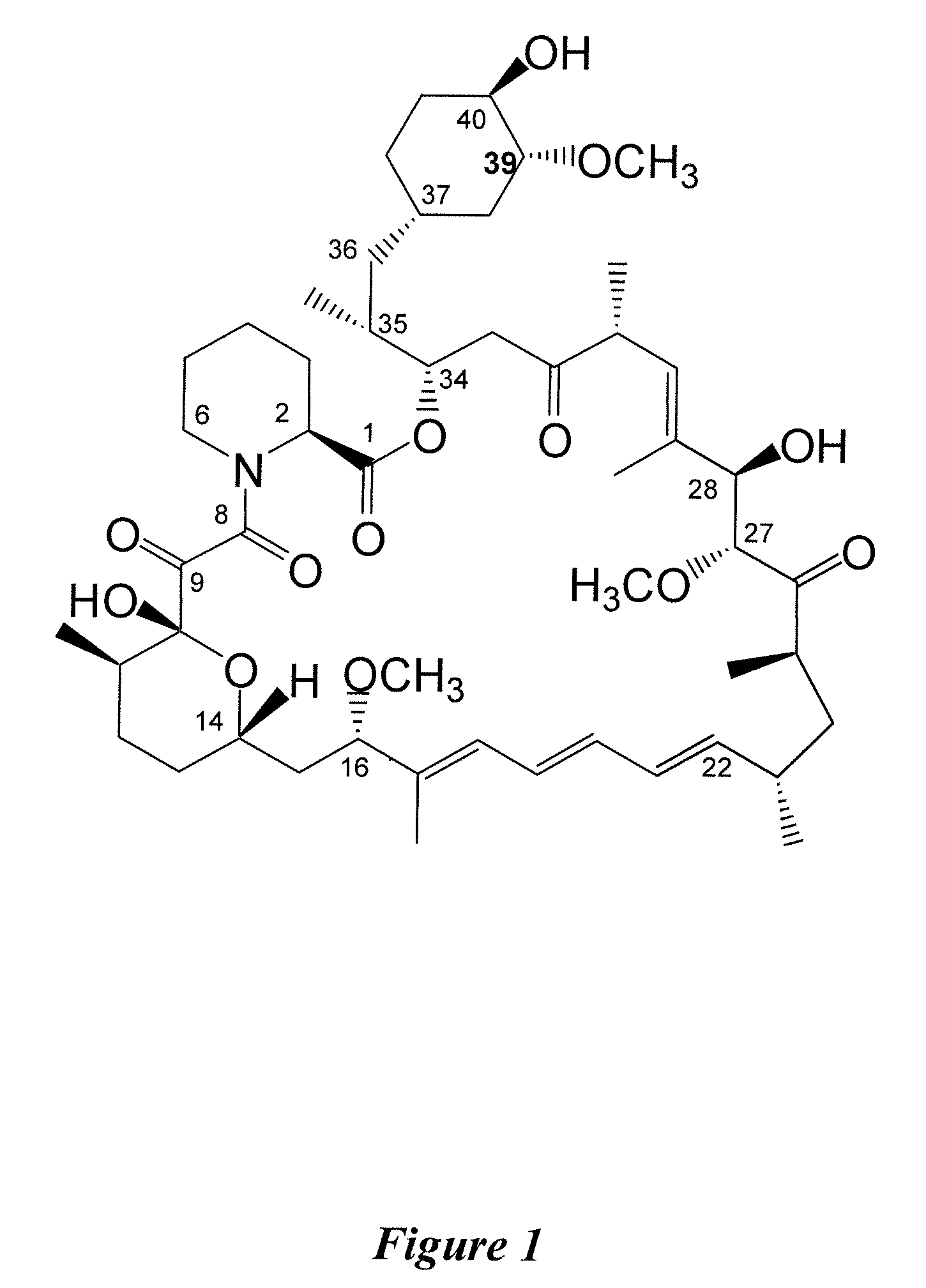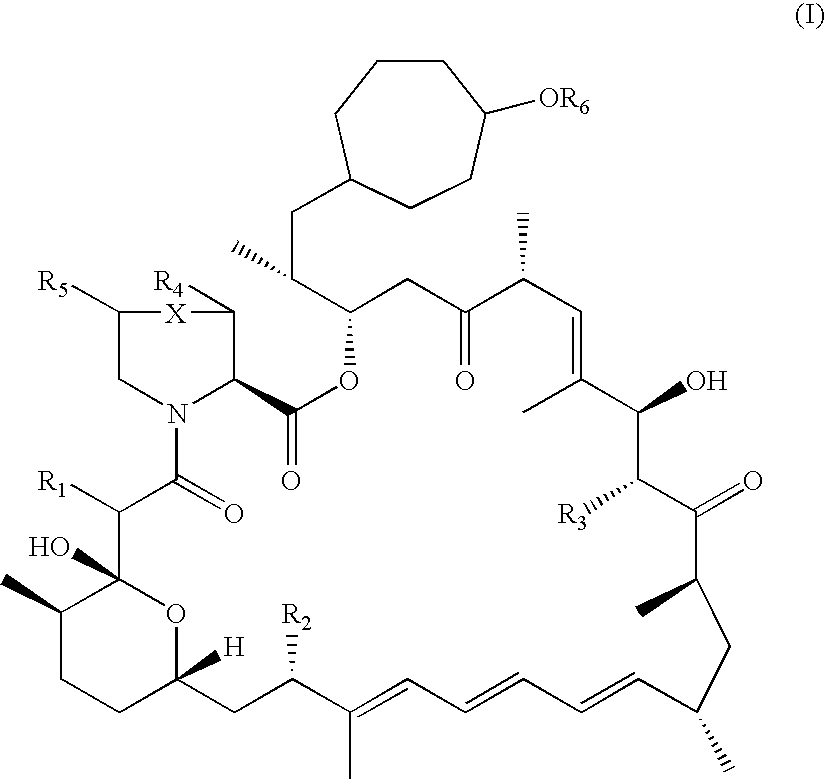36-Des(3-Methoxy-4-Hydroxycyclohexyl) 36-(3-Hydroxycycloheptyl) Derivatives of Rapamycin for the Treatment of Cancer and Other Disorders
a technology of rapamycin and derivatives, applied in the field of new drugs, can solve the problems of bone marrow and immune system dysfunction, host is highly susceptible to infection and bleeding, and cannot achieve sterilization through filtration
- Summary
- Abstract
- Description
- Claims
- Application Information
AI Technical Summary
Benefits of technology
Problems solved by technology
Method used
Image
Examples
example 2
36-des(3-methoxy-4-hydroxycyclohexyl)-36-(3-hydroxycycloheptyl)-40-O-[2,2-bis(hydroxymethyl)propionyl]rapamycin through lipase catalysed esterification of 36-des(3-methoxy-4-hydroxycyclohexyl)-36-(3-hydroxycycloheptyl)rapamycin
[0163]A mixture of 36-des(3-methoxy-4-hydroxycyclohexyl)-36-(3-hydroxycycloheptyl)rapamycin (10 mg, 0.011 mmol), vinyl 2,2,5-trimethyl[1.3-dioxane]-5-carboxylate (100 mg, 0.5 mmol), lipase PS-C “Amano” II (100 mg) and molecular sieves 0.5 nm (50 mg) in anhydrous tert-Butyl methyl ether (2 mL) was heated to 43° C. under an atmosphere of argon. After 72 h LC / MS monitoring showed complete conversion of the starting material. THF (10 mL) was added and the mixture was filtered through a pad of celite. The enzyme was washed with THF (2×10 mL) and the combined organic extracts were concentrated under reduced pressure. The residue was dissolved in THF (7.5 mL) and H2SO4 (2.5 mL, 0.5 N) was added. The solution was allowed to stand at room temperature for 5 h and the re...
example 3
36-des(3-methoxy-4-hydroxycyclohexyl)-36-(3-hydroxycycloheptyl)-40-O-(2-hydroxy)ethyl rapamycin
3.1. 2-(tert-butyldimethylsilyl)oxyethyl triflate
[0165]A solution of 2-(tert-butyldimethylsilyl)-ethylene glycol (125 mg, 0.71 mmol) and 2,6-lutidene (0.08 mL, 0.69 mmol) in 6 mL dichloromethane was cooled to −78° C. Trifluoromethanesulfonic anhydride (0.11 mL, 0.65 mmol) was added over a period of 5 min and stirring was continued for additional 15 min at −78° C. to complete the formation of the triflate. The triflate was used in situ for the reaction as described in 3.2 below.
3.2. 40-O-[2-(tert-butyldimethylsilyl)]ethyl-36-des(3-methoxy-4-hydroxycyclohexyl)-36-(3-hydroxycycloheptyl)rapamycin
[0166]36-des(3-methoxy-4-hydroxycyclohexyl)-36-(3-hydroxycycloheptyl)rapamycin and 2,6-di-tert-butylpyridine are treated with 2-(tert-butyldimethylsilyl)oxyethyl triflate at room temperature. This solution is then concentrated to a third of its original volume with a gentle stream of nitrogen and the r...
PUM
| Property | Measurement | Unit |
|---|---|---|
| Bond | aaaaa | aaaaa |
Abstract
Description
Claims
Application Information
 Login to View More
Login to View More - R&D
- Intellectual Property
- Life Sciences
- Materials
- Tech Scout
- Unparalleled Data Quality
- Higher Quality Content
- 60% Fewer Hallucinations
Browse by: Latest US Patents, China's latest patents, Technical Efficacy Thesaurus, Application Domain, Technology Topic, Popular Technical Reports.
© 2025 PatSnap. All rights reserved.Legal|Privacy policy|Modern Slavery Act Transparency Statement|Sitemap|About US| Contact US: help@patsnap.com



